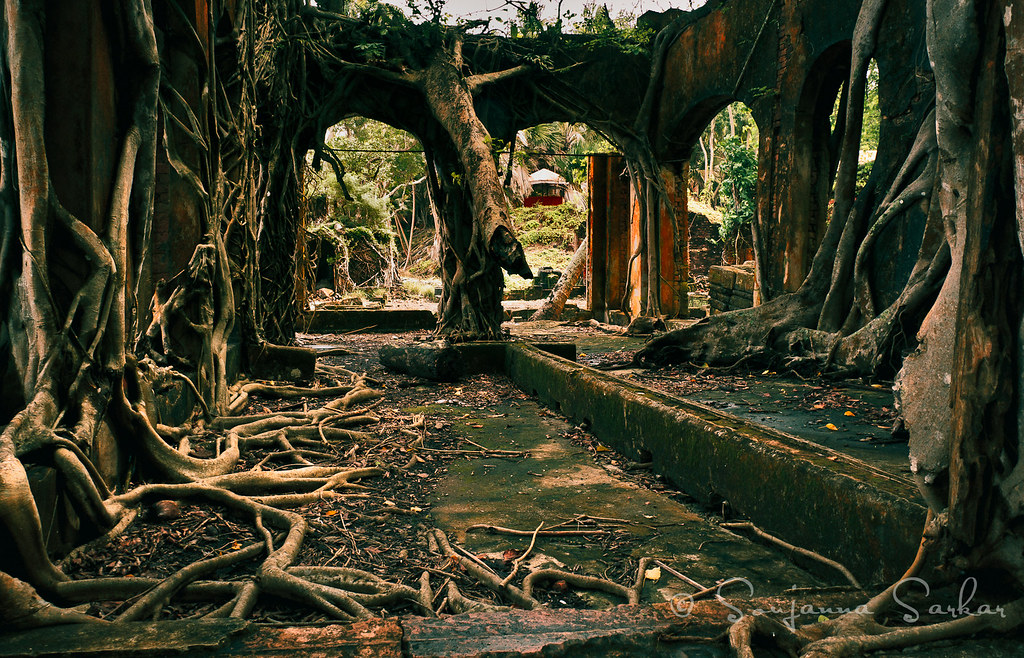Ross Island was the British equivalent to the Soviet gulags and the Nazi death camps.
Everything from torture, forced labor and medical experimentation took place here.
The death toll was immense.
Abandoned colonial architecture covered with big tree roots at Ross island.
Photo credit: Sun_Shine/Shutterstock
This decree was calledkala pani, which literally meant black water.
Later, the penal colony itself came to be known askala pani.
The British hoped that the word would instill fear among all Hindus across the Empire.
However, before construction could commence the Revolt of 1857 broke out.
It was the first of many rebellions that would follow against the British rule.
Ross Island was chosen as the first convict settlement due to the availability of water.
Abandoned colonial architecture covered with big tree roots at Ross island.
Photo credit: CRS PHOTO/Shutterstock
Over the years the number of prisoners in Ross Island grew to over 15,000.
Nearly all of them suffered from one sickness or the other.
Malaria, pneumonia and dysentery were the leading causes of death.
Others succumbed to torture and malnutrition.
Those working in the fields became victims to the indigenous people, some of which practiced cannibalism.
Medical experimentation also took place at Ross Island.
Some got diarrhea, others got depressed and began injuring each other.
The authorities reacted by hanging those affected.
Anyone visiting Ross island would have been surprised by the transformation.
Today, every standing building has been devoured by the encroaching forest.
The rest was leveled by a magnitude of 7.7 earthquake that hit the Andaman Islands in 1941.
Old presbyterian church ruins at Ross Island.
Photo credit: PI/Shutterstock
After the devastating earthquake, Ross Island was nearly abandoned.
Shortly before Indias independence in 1947, the penal colony was disbanded.
Creepers coverthe ruins on Ross Island.








